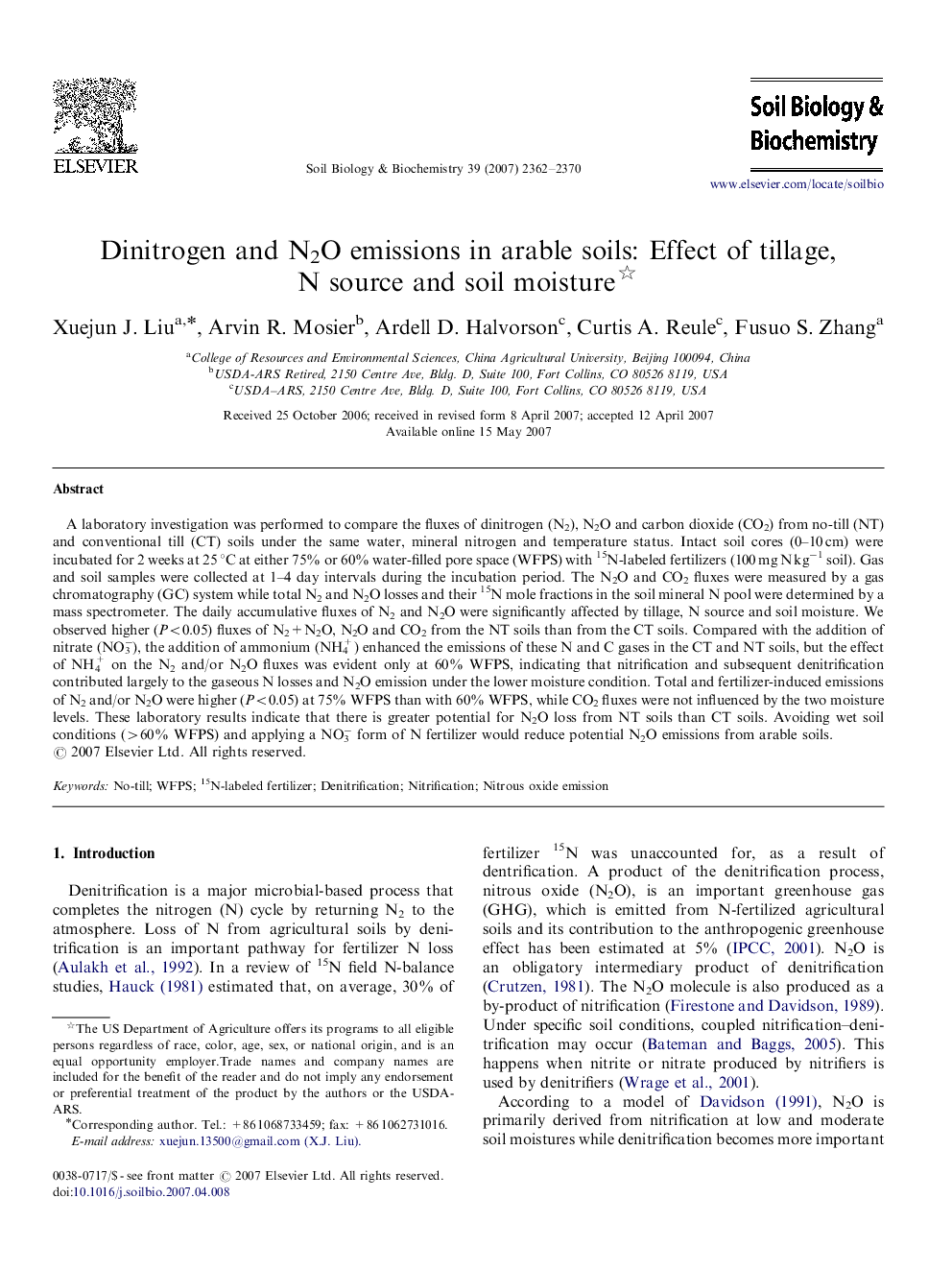| Article ID | Journal | Published Year | Pages | File Type |
|---|---|---|---|---|
| 2026191 | Soil Biology and Biochemistry | 2007 | 9 Pages |
A laboratory investigation was performed to compare the fluxes of dinitrogen (N2), N2O and carbon dioxide (CO2) from no-till (NT) and conventional till (CT) soils under the same water, mineral nitrogen and temperature status. Intact soil cores (0–10 cm) were incubated for 2 weeks at 25 °C at either 75% or 60% water-filled pore space (WFPS) with 15N-labeled fertilizers (100 mg N kg−1 soil). Gas and soil samples were collected at 1–4 day intervals during the incubation period. The N2O and CO2 fluxes were measured by a gas chromatography (GC) system while total N2 and N2O losses and their 15N mole fractions in the soil mineral N pool were determined by a mass spectrometer. The daily accumulative fluxes of N2 and N2O were significantly affected by tillage, N source and soil moisture. We observed higher (P<0.05) fluxes of N2+N2O, N2O and CO2 from the NT soils than from the CT soils. Compared with the addition of nitrate (NO3−), the addition of ammonium (NH4+) enhanced the emissions of these N and C gases in the CT and NT soils, but the effect of NH4+ on the N2 and/or N2O fluxes was evident only at 60% WFPS, indicating that nitrification and subsequent denitrification contributed largely to the gaseous N losses and N2O emission under the lower moisture condition. Total and fertilizer-induced emissions of N2 and/or N2O were higher (P<0.05) at 75% WFPS than with 60% WFPS, while CO2 fluxes were not influenced by the two moisture levels. These laboratory results indicate that there is greater potential for N2O loss from NT soils than CT soils. Avoiding wet soil conditions (>60% WFPS) and applying a NO3− form of N fertilizer would reduce potential N2O emissions from arable soils.
